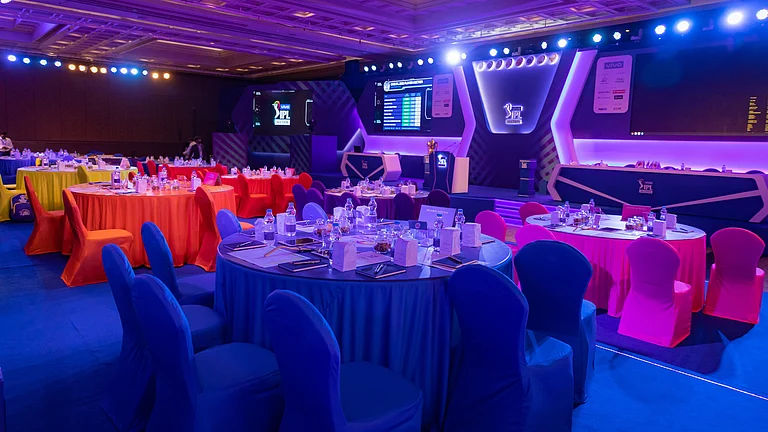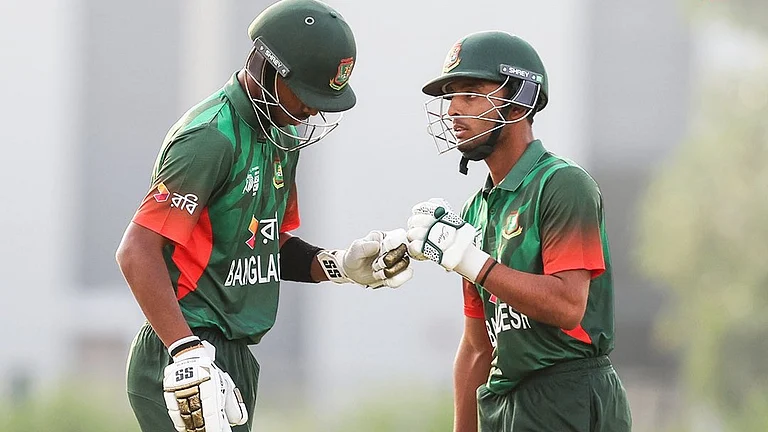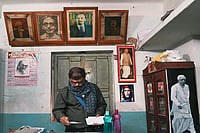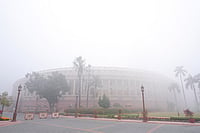Entering Lucknow nawab Jafar Mir Abdullah’s living room is like stepping into a culinary museum of sorts. A host of ornate utensils, traditional pots and pans and priceless paandaans occupy pride of place alongside dusty furniture and fading upholstery. Their glory days may well be over, but the nawabs still take their food seriously. My casual query—“Kabab kaise banate hain” (how does one make kababs)—is met with gentle admonition: “Bewakoof banaya jaata hai, hajamat banayi jaati hai, classroom mein murga banaya jaata hai. Kabab to seke aur tale jaate hain.” (That’s impossible to translate without skewering the wit, so please consult the initiated.) There is an exact word for the ‘way’ each dish is cooked, I am told, a distinct grammar and vocabulary to each stage of cooking, right down to the kind of coal and intensity of flame. There is a protocol even in the dastarkhaan chun’na (the laying of the table). In Awadhi cuisine, cooking and eating are not just about filling the stomach. “Adaab-e-dastarkhaan (the fine art of dining),” Nawab Abdullah informs me, “is all about tehzeeb, saleeka (etiquette), nafasat (artistry) and itminaan (satisfaction).”
If food is the soul of Lucknow, the soul itself is food in Benares. “Kashi is the place where people come to seek salvation,” says long-time Benares resident and journalist Amitabh Bhattacharya. “Marne ki tamanna liye jeeye jaa rahe hain (We live with the desire to die).” This “pass-the-time-till-salvation” philosophy is what finds its way into its food. Benares is laidback, casual and carefree about its food. An attitude you can encounter right outside the tiny, nondescript Pappu ki chai ki dukaan in Assi Ghat. Tea and milk are on a constant boil here in pans burnt soot-black with endless years of use. The tea, though, is just an excuse, even if a compelling one: the real reason people flock here is to meet old friends, make new ones, share a copy of Amar Ujala, discuss politics, elections and corruption or engage in some quintessentially Banarasi banter and leg-pulling. “Pappu ki dukaan is like a curio shop filled with the educated and aware specimen of humanity,” says Ashok Pandey, UP BJP spokesperson and a regular here.

Kabab platter Tundey Miyan at Aminabad in Lucknow. (Photograph by Nirala Tripathi)
Sher-e-Kabab (Rumoured to be written by Baba Hazara)
Kabab–e-seekh hain hum, karwatein har su badalte hain;
Jal uthta hai ye pahlu, toh woh pahlu badalte hain
(Like a kebab on a skewer am I, tossing ’n turning,
when one side is burnt, they turn me over)
Kisi ko dekh kar, saaqi ke hosh aise ude;
Sharaab seekh pe daali, kabab sheeshe mein
(On seeing someone, the saaqi loses sense so,
pours the wine over the skewer, and the kabab into the glass)
Between Nawab Abdullah’s culinary museum and the sociological curio shop that is Pappu’s chai ki dukaan lies a tale of two cities—one shaped by its predominantly Muslim heritage, the other by its Hindu ethos. It also tells in the cuisine. Much fuss attends the food in Lucknow. “It should appeal to the three senses,” says academician Sabiha Anwar. “It should smell, look and taste good.” By contrast, “there’s nothing elaborate about the cuisine in Benares,” says sitar player Deobrat Mishra. “It’s simple but extremely flavourful.”
The Lakhnawi thus will labour over his food: use strong flavours, khada masala, cook dumpukht to seal the aroma, garnish with saffron and dry fruit, and have it all come together in subtle perfection. He will even fret over his breads: sheermal, bakarkhani or paranthas to go with his kababs; kulchas with nihari, and naan with the shorbas and curries.
The Banarasi babu, on the other hand, is straightforward and undemanding, likes things understated. Not for him the zafran-laden delicacies, he finds solace in heeng-infused subtleties, preferring his arhar dal to the nawab’s partiality for urad. Benares has no concept of lunch and dinner; if people here are particular about anything, it’s their breakfast. “Banarasis thrive on a heavy breakfast,” explains Bhattacharya. That breakfast usually comprises of poori/kachori with mixed sabzi and ghughri (white pea curry), followed by hot jalebis washed down with lassi so thick with generous lashings of cream and rabri that you have to use a spoon.
Milk, in fact, is a strong component in the Banarasi diet. “The town must be consuming the most milk and milk products in India, be it thandai, hot and cold milk, rabri, malai, ghee, chaach, dahi, lassi or malaiyyo,” says Bhattacharya. But the thandai in Benares is fruit-based, unlike its milk-based variant in Lucknow. Banarasis also claim that Lucknow’s malai-makkhan traces its origins back to their malaiyyo, the unique frothy cream made by whisking milk cooled in the winter dew. Jalebis are had with lassi/dahi in the mornings, jalebas with hot milk in the evenings, while the imarti in Benares is always topped with rabri.
Six hours and a distance of 305 kilometres separate Lucknow and Benares but there’s much that changes in between. The Gomti gives way to the Ganga, Lucknow’s gardens and majestic mosques to winding alleys, ghats and temples. On the NH-56, it’s hard to tell where Lucknow’s influence starts fading and Varanasi’s begins. It’s easier for the tongue, though, to tell variations on the gastronomic scale along the way.

Photograph by Nirala Tripathi
Ninety kilometres out of Lucknow and the previous night’s kabab platter at Clarks Avadh’s Falaknuma restaurant is already a distant memory. As is the breakfast of soft buns and creamy, white butter at the Sharma Tea Centre before starting on our drive. The road to Benares is marked by gastronomic precursors: gulab jamuns at Hajir Sabir’s hole-in-the-wall shop without a name, just opposite the bhel factory gate in Jagdishpur; laddoos, barfis, amla (Indian gooseberry) candies at Sultanpur; and, about 50 km before our final destination, ‘world-famous’ imartis from Beniram Pyarelal of Jaunpur. His imarti is more malpua, soft and dipped in sugar syrup that doesn’t crystallise for days on end.
Two ends of the food spectrum, and each fiercely proud of its food. “Food is a significant aspect of our culture and identity,” says Sabiha Anwar. “Banaras ka to matlab hi hai sab rason se paripoorn (‘Banaras’ itself means full of all flavours),” says tabla maestro Lachchu Maharaj. If there is a difference of opinion, it’s on where you get the better paan. The jury is still out on whether Lucknow’s tiny gilori can dare compare with Varanasi’s abiding betel leaf, smeared with kattha, chuna, elaichi, supari, saunf, laung, surti and kimam. “We spend as much on eating paan as other cities spend on their maintenance and upkeep,” says a proud Lachchu Maharaj.

Lavish spread A dastarkhaan at a Lucknow household. (Photograph by Nirala Tripathi)
When it comes to the street food, both Lucknow and Varanasi have their own set of delicacies. If Lucknow can boast of Guptaji ke dahi-wade near the zoo, the matar ki chaat at Shukla Chaat Bhandar or the Basket Chaat at Royal Cafe in Cupoor’s Hotel, Varanasi can take pride in the simple but divinely delicious chooda-matar or fried poha garnished with dry fruit and peas, the tangy tamaatar ki chaat made with tomatoes, boiled potatoes, crisp papri and posto (poppy) seeds, and a winter specialty in mugdul, or halwa/barfi made with ground moong-urad dal and tonnes of ghee. Of course, momos, chowmein and pav bhaji sell as briskly in Hazratganj as chaat, and the food courts in malls are becoming the new eating hubs. On the other hand, Ananas ke paranthe, made with pineapple and had with balayi (cream) and rub (a kind of fruit jam), have become almost extinct.
Benares has also been more open to outside influence in its food. It is, as Bhattacharya puts it, everyman’s land, with people from all over descending here in search of salvation and bringing their food along as well. The town’s trademark sweet, laung lata, is a Bengal import. Similarly, bati-chokha has emerged as a favourite picnic meal of the Banarasis, a nod to the Bihar influence. “People of various states set up their own mohallas,” says legendary author Kashinath Singh. “So a place like Jangambadi offers food from the Andhra and Karnataka region.” It’s not unusual to see idli, dosa, vada seen spread out in Kachori Gali. Why, the cuisine has grown from pan-Indian to international. So if you are craving for the best thin-crust pizzas or apple pie to soothe your soul, do go on a pilgrimage to Assi Ghat, to a cult cafe called Vatika Pizzeria. As Bhattacharya puts it, “Varanasi now offers a menu card of the whole wide world.” Of course, washed down with lassi.






















